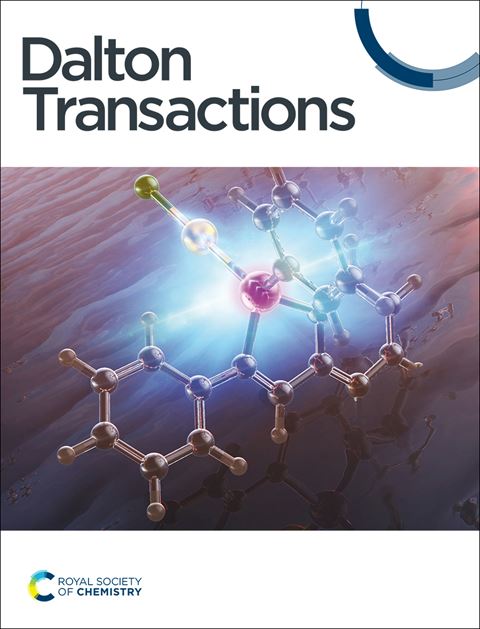The Binuclear Copper State of Peptidylglycine Monooxygenase Visualized through a Selenium-Substituted Peptidyl-Homocysteine Complex
IF 3.5
3区 化学
Q2 CHEMISTRY, INORGANIC & NUCLEAR
引用次数: 0
Abstract
Bioactive peptides generally require post-translational processing to convert them to their fully active forms. Peptidylglycine monooxygenase (PHM) is a copper-dependent enzyme that catalyzes C-alpha hydroxylation of a glycine-extended pro-peptide, a critical post-translational step in peptide amidation. A canonical mechanism based on experimental and theoretical considerations proposes that molecular oxygen reacts at the mononuclear CuM-center to form a reactive Cu(II)-superoxo intermediate capable of H-atom abstraction from the peptidyl substrate, followed by long range ET from the CuH center positioned 11 Å away across a solvent-filled cleft. However, recent data has challenged this mechanism, suggesting instead that an “open-to-closed” conformational transition brings the copper centers closer to facilitate reaction at a binuclear copper site. Here we present direct observations of an enzyme-bound binuclear copper species, which was enabled by the use of an Ala-Ala-Phe-homoselenocysteine (hSeCys) species. EXAFS, UV/vis, and EPR studies are used to show that this reagent reacts with the oxidized enzyme to form a novel mixed valence entity which is subtly different from that observed previously for the S-peptidyl complex (J. Am. Chem. Soc. (2024)146, 5074-5080). In the ascorbate-reduced Cu(I) state of PHM, EXAFS measurements at both the Se and Cu absorption edges provide a unique signature of a bridging mode of binding, with Se-Cu site occupancy (1.8) measured from the Se-EXAFS simulating to twice that of the Cu-Se site occupancy (0.85) measured at the Cu edge. The ability of the hSeCys entity to induce a binuclear state is further emphasized by the XAS of the selenomethionyl peptide complex, where no such bridging chemistry is observed. The properties of the binuclear PHM derivative are of interest due to their unique chemical signatures, as well as providing the basis for a completely new mechanistic paradigm for PHM and its monooxygenase congeners.求助全文
约1分钟内获得全文
求助全文
来源期刊

Dalton Transactions
化学-无机化学与核化学
CiteScore
6.60
自引率
7.50%
发文量
1832
审稿时长
1.5 months
期刊介绍:
Dalton Transactions is a journal for all areas of inorganic chemistry, which encompasses the organometallic, bioinorganic and materials chemistry of the elements, with applications including synthesis, catalysis, energy conversion/storage, electrical devices and medicine. Dalton Transactions welcomes high-quality, original submissions in all of these areas and more, where the advancement of knowledge in inorganic chemistry is significant.
 求助内容:
求助内容: 应助结果提醒方式:
应助结果提醒方式:


